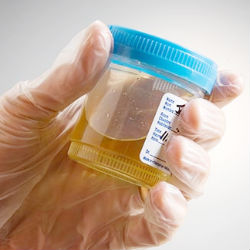With marijuana still in the spotlight as it becomes increasingly available throughout the U.S., we find ourselves amidst a culture-feud of commentary, studies, and opinion highlighting or betraying the benefits of the drug. Of these, an interesting correlation was recently uncovered whereby researchers found that traces of marijuana abuse by youths as young as thirteen compromised a slew of narcolepsy diagnoses originally postulated by physicians. This follows a recent initiative introduced by Director of the Sleep Disorders Center at Nationwide Children’s Hospital, Mark L. Splaingard, MD, to conduct urine drug screens on patients—especially youths—so that studies aiming to identify prevailing numbers with regards to those suffering from narcolepsy can avoid inflated results and wasted time & money.
According to an article posted on Science Daily, “the revealing 10-year retrospective study of 383 children is the first to examine the prevalence of positive drug screens in pediatric patients undergoing MSLT. The study, published in the Journal of Clinical Sleep Medicine, found that 43% of children with urine drug screens positive for marijuana actually had test results consistent with narcolepsy or abnormal REM sleep patterns.”
What this boils down to is the fact that we have a generation of youths who are going to school tired, unfocused, and uneducated about the effects that marijuana can have on a person’s body, resulting in an increased number of students—and their parents—who are looking too closely at the symptoms (i.e. tired, falling asleep throughout the day, etc.) rather than the causes. Perhaps even more eyebrow-raising is the fact that if you consider the number of testing sites with a similar lack of urine-testing protocol, we might very well be facing a situation whereby marijuana’s availability and pervasiveness has so diluted society’s expectations of its effectiveness that studies’ results are being skewed left and right. This isn’t a call-to-arms, by any means, but it does give one pause.
Folllowing Dr. Splaingard and his team’s efforts, the results were clear:
“We believe that many of the children who had positive urine drug testing for marijuana and testing consistent with narcolepsy had improvement of the symptoms of excessive day time sleepiness after enrollment in a community drug program, because most didn’t come back for repeat diagnostic studies once they were drug-free.
A key finding of this study is that marijuana use may be associated with excessive daytime sleepiness in some teenagers. A negative urine drug screen finding is an important part of the clinical evaluation before accepting a diagnosis of narcolepsy and starting treatment in a teenager.”
Perhaps we’re not alone in thinking that a negative urine drug screen finding is an important part of clinical evaluation when considering any type of test result and diagnosis.
What do you think?








